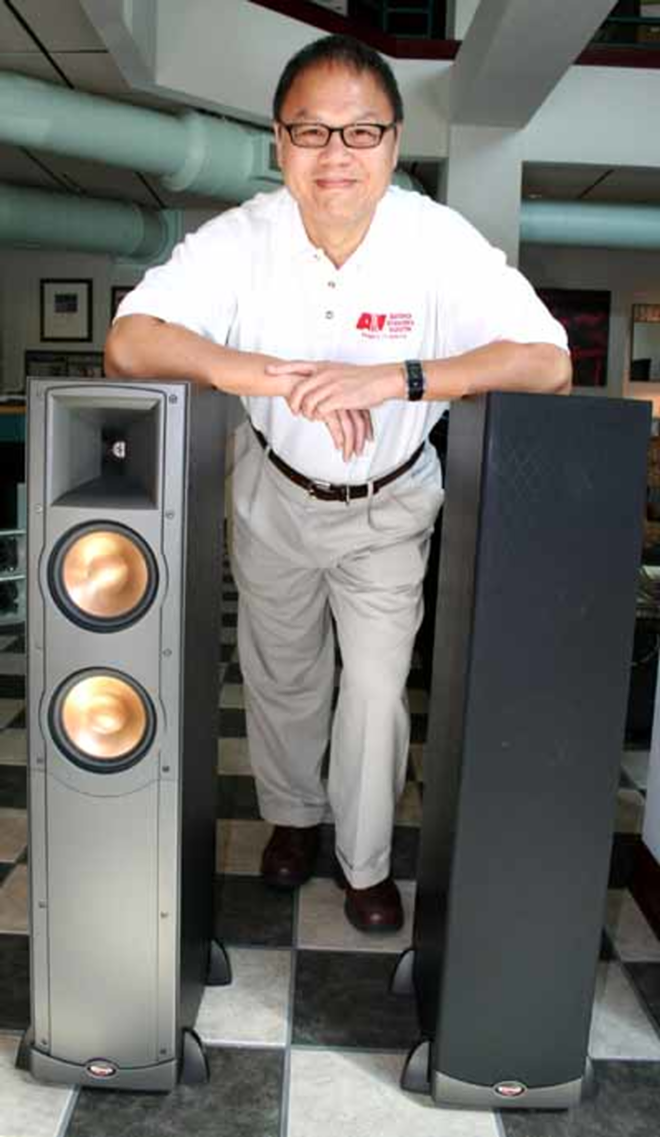Been hanging around the house more lately? Cutting back on expensive dinners out, picking your concerts more carefully? Did you nix the summer vacation?
Cutbacks like those make your home entertainment system that much more important. So it might be time for an upgrade. There are numerous ways to go, of course, from finally taking the plunge into HDTV to adding that long-lusted-after preamp.
But what to focus on? For audio system upgrades, speakers offer the most instant gratification; they're the components most tailored to your personal tastes. Speakers are the voice of your stereo.
CL convened a panel of experts in the field: George Liu, owner of the high-end stereo store Audio Visions South in Tampa, who organized the session; Brian Flinchum and John Mendes from the home theater department at Best Buy; and Scott Zepeda, CL's resident audiophile.
My role: Act as the music-loving consumer advocate, listening intently without a head full of specs and other technical info.
We gathered at one of the comfy listening rooms in AVS. George picked some of his favorite speakers from the shop, and the Best Buy guys brought over three pairs.
For demo purposes, George punched in a couple of songs form his hand-held Linn DS Music Server: "Trouble in Mind," a slice of white-girl blues/jazz by British singer Barb Jungr, and "Vicarious" by Tool. We listened to parts of each song, then swapped out the speakers, starting with the cheapest ($100), a starter set for boom-box graduates, and working our way up to the most expensive ($1,500).
Our aim with this exercise is to help you get started on a speaker upgrade and offer an alternative to buying the first major-brand pair that's on sale. We've recommended products that offer excellent value at different price points and are readily available in this market.
Polk Audio T-15 ($99.98 a pair, Best Buy)
As the fellas wired up these twin bookshelf numbers, I recalled the wimpy, tinny versions (brand name long forgotten) I had in the dorm room way, way back in the proverbial day. These Polks are less than a foot high and weigh 7 pounds each, I thought: What can they possibly do?
Turns out, much more than I expected.
On the Barb Jungr track, the opening acoustic bass lick was easily recognizable as such — a good start — but most important, the Polks filled up the room.
These speakers fared better with the Tool tune — the highs were a little squishy, but the bass put out some very respectable wallop. The Polks don't provide much sonic detail, but that's a bit too much to ask from a bargain-price product like this. George, whose store doesn't deal in low-end units, said, "They're much better than you'd expect, especially for the money."
Bose 301 ($295, Best Buy)
Ah, Bose. Those infomercials where people talk about how amazed they are by speakers the size of dice. The outlet mall stores. Back in the '70s, Bose was quite the status product (especially the 901s), but its speakers have since been scoffed at by audiophiles as lowest-common-denominator stuff.
But do they deserve their bad rep? It seems our industry panel was prepared to back the 301s, which are not cube speakers, as a good value.
I found them lacking overall. On the Tool song, the synthesizer plinks accenting the intro power chords were vague, suggesting that listeners get short shrift on the highs. The bass was solid, with an 8-inch woofer it should be. The Bose didn't handle Jungr's way-out-front vocals particularly well, making them sound kind of artificial.
But if you want loud and in-your-face, the 301s can certainly deliver. One of the guys called them "bookshelf, stadium-style," an accurate assessment. The best praise for the 301s came from Zepeda, a dedicated Bose hater: He raised his eyebrows and said with a tinge of surprise, "Not so bad."
Klipsch RB-51 ($350, AVS)
On the whole, our panel of experts was high on Klipsch: exceptionally good value for a mass-market brand. The RB-51s aren't much bigger than the $100 Polks — they are proportionally heavier at 12 pounds apiece — but they sound (and even look) muscular. I could immediately detect brighter sonics; Jungr's vocals came across much better (although still a bit shrill). On the Tool track, those synth plinks took on more character, and you could discern details in the song's thick, crowded mix. Highs and midrange earned good grades.
The bass may have not had as much whomp as the Bose, but RB-51s threw a decent haymaker on the bottom end. Brian from Best Buy praised the cabinetry, which "brought out more bass from a smaller speaker."
All told, put out the extra 50 and take the Klipsch over the Bose 301.
B&W 685 ($650, AVS)
More big sound from a small box. But don't disgrace these speakers by putting them on a shelf; they demand a stand of some sort. George explained that these B&Ws, the fourth generation of the British company's highly regarded 600 series, combined the strengths of the previous Bose and Klipsch models.


